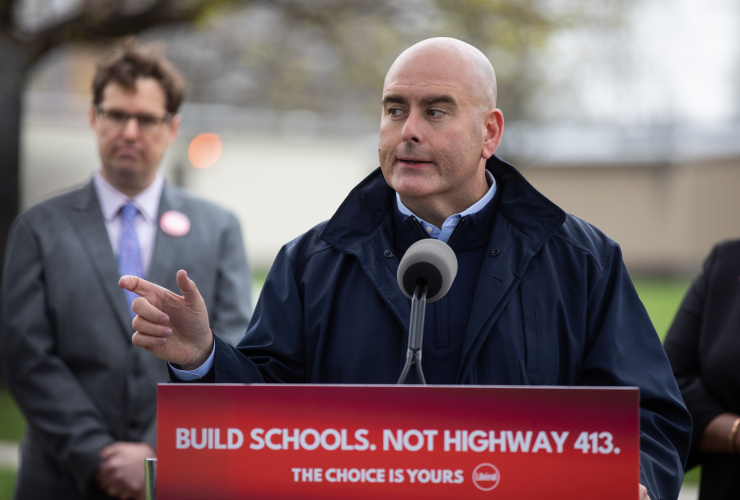The Ontario Liberal Party (OLP) is stuck in the proverbial wilderness. And while there’s been a great deal of discussion on the party’s tactical errors that have contributed to this positioning, as a professional researcher, I wanted to provide a data-driven analysis to understand what got the party here and what it would take to bring it back to electability.
First, the cold hard truth for Ontario Liberals: By the time the next provincial election rolls around, it will have been 12 years since the OLP last won a majority government and 19 years since it won the same share of the popular vote that Doug Ford got in 2022. What’s more, the OLP has won seven and eight seats in the last two provincial elections, respectively, being lucky to have even won that many.
In 2022, 38 per cent of the OLP’s seats were “close” victories, won by less than 10 per cent, compared to only 24 per cent of the Progressive Conservatives’ (PC) wins and 38 per cent of the NDP’s wins. In 2018, 71 per cent of the OLP’s wins were “close” compared to 26 per cent of the PC’s seats and 25 per cent of the NDP’s.
The OLP needs to rethink its electoral strategy or risk the NDP surpassing them as the alternative to the PCs in the eyes of Ontarians. In some ridings, it’s already happened. How did we get here?
In 2020, the party elected Steven Del Duca as its leader, who said during the leadership race that the party moved too far to the left under Premier Kathleen Wynne. Del Duca was undoubtedly considered a centrist candidate and won a strong majority in the leadership race, clearly indicating the party’s membership thought a centrist would be able to win both centre-left and centre-right voters on their path to Queen’s Park.
It was a playbook designed for hypothetical centrist voters whose numbers and influence have been greatly exaggerated in recent years. The result?
With over four million votes cast in the last provincial election, the OLP won just 5,000 more votes than the Ontario New Democrats, a dream scenario for the PCs.
The PCs have a resoundingly strong base of core supporters in Ontario. Only twice since 1943 have the PCs come in third in an Ontario election. The more even the vote split is on the left, the easier the path to victory for the PCs.
So, the best way for the Ontario Liberals to grow their electoral pie is to be the credible alternative to the PCs in the eyes of all progressive voters in Ontario (you’ll hear politicos call this winning the progressive primary), rather than split the progressive voter bloc with the NDP and fight with the PCs over the vanishing centre vote.
According to an Ipsos poll conducted shortly before the 2022 Ontario election, soft NDP voters are much more attainable for the OLP than soft PC voters.
Just 17 per cent of PC voters said they would choose the Liberals as their second choice and 18 per cent would choose the NDP. The Liberals were only three per cent more popular than the Green Party among PC voters.
The good news is that 42 per cent of NDP voters at the time said they would choose the Liberals as their second choice and just 16 per cent would choose the PCs, while 28 per cent would choose the Greens.
So, the Ontario Liberals need to attract progressive voters who bounce between the NDP and the OLP, which the polling shows is much easier.
More good news for the OLP is that there is an electoral strategy even simpler and with even more upside — motivating progressive voters who stayed home in 2022 to vote Liberal in 2026.
Last year set the record for the lowest voter turnout in an Ontario provincial election, when just 43.5 per cent of eligible voters cast a ballot.
Many of the non-voters who stayed home are traditionally progressive voters; in 2018, there were 42 ridings where the OLP and NDP combined for more than 60 per cent of the vote. In 2022, only 21 ridings met that same threshold.
Millions of would-be progressive voters stayed home, likely because they did not see a credible progressive alternative to the PCs or accepted the election results as a foregone conclusion.
So, while it’s true the only poll that matters is the one on election day, there’s clear evidence that the OLP’s path to victory veers left.
Hunter Knifton is a pollster and communications strategist for progressive political campaigns across Canada. He is an experienced quantitative and qualitative research professional with a strong background in data science and politics. He is currently the director of advanced analytics at one of Canada's leading public opinion research firms. He is a regular guest lecturer at the Ivey School of Business and Carleton’s political management program and is a graduate of the Ivey Business School and MIT’s applied data science program.
This is all no doubt true.
This is all no doubt true. But if the path to victory involves being more left rather than centrist, wouldn't it make more sense just to back the (at least theoretically) left-ish party rather than the centrist one? I mean, what we're saying here is that the path to victory for the Liberals is to pretend to be the NDP. But wouldn't it be simpler for the NDP to pretend to be the NDP?
Argentina has been run by
Argentina has been run by socialist progressive gov't for 20 years. It just elected a right wing populist. They did this because socialism has been a failure. Spain, Sweden and the Netherlands are doing the same thing. Time for socialists to wake up!
Which side was it again that
Which side was it again that spawned the whole dumb, dumber and dumbest trend where everything is based on entertainment starting with movie star Reagan to Trump?
"These are not serious people" is wild understatement.
And the TV guy wielding a frigging chain as what, punctuation for his well thought out ideas? We can all see that school wasn't your thing but isn't this taking your dogged anti-intellectualism to a whole other level?
There's a popular book about Americans that predicted all this called "Amusing Ourselves to Death."
Or....... since centrist
Or....... since centrist voters have become mostly hypothetical how about embracing the reality and seeking NEW strength in numbers and uniting Liberals, NDP and Greens? Duh.
NEW anything always attracts more interest than anything else after all.






Comments